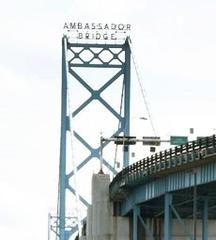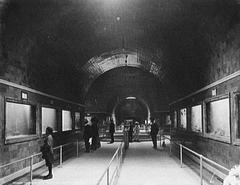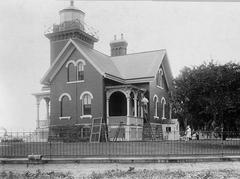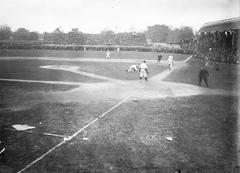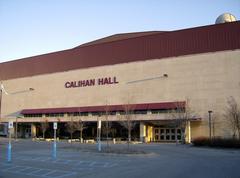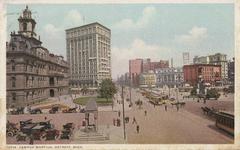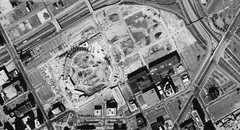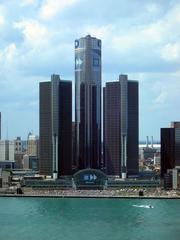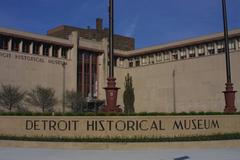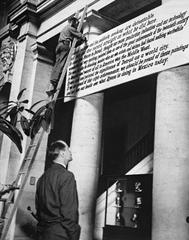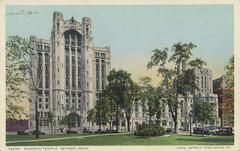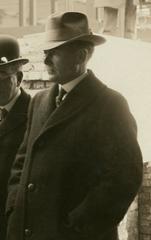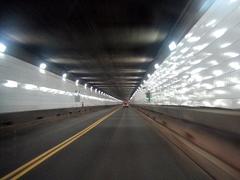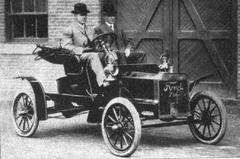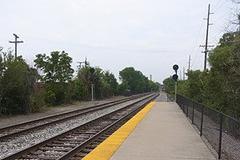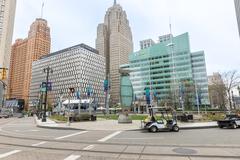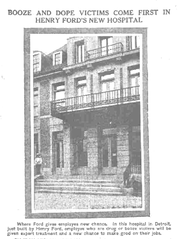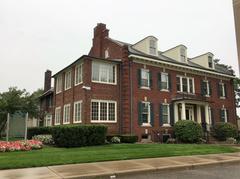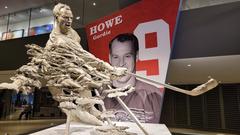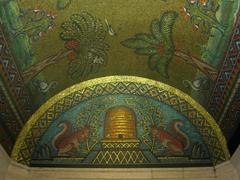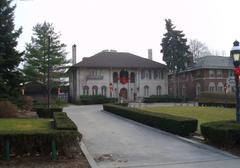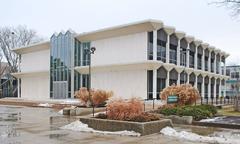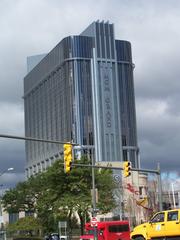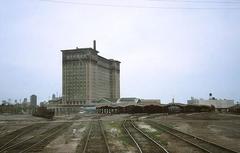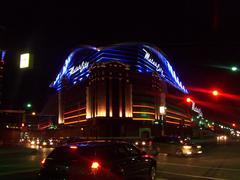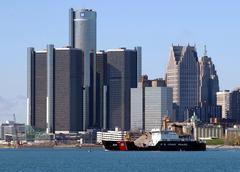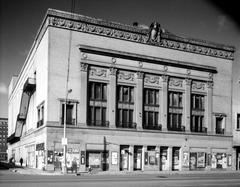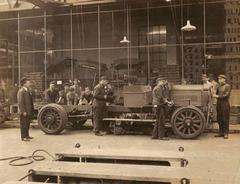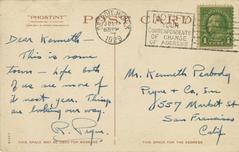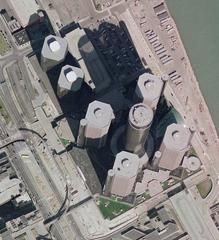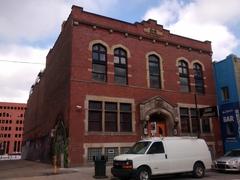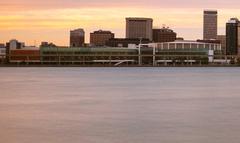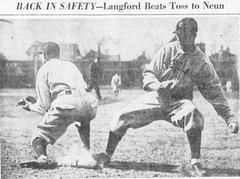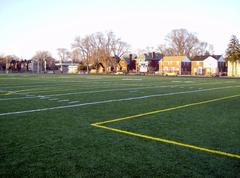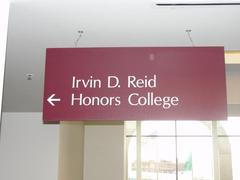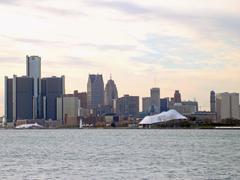
Saint Andrew'S Memorial Episcopal Church
Saint Andrew’s Memorial Episcopal Church Detroit: Visiting Hours, Tickets, and Historical Site Guide
Date: 04/07/2025
Introduction
Saint Andrew’s Memorial Episcopal Church is a distinguished landmark in Detroit’s Midtown district, renowned for its rich history, architectural brilliance, and ongoing role as a cultural hub. Occupying a prominent location on the Wayne State University campus, the church stands as a testament to Detroit’s evolving spiritual and urban landscape, offering visitors a unique blend of Gothic Revival architecture, community engagement, and artistic vibrancy (University of Michigan Finding Aids).
Designed by renowned architect Ralph Adams Cram, Saint Andrew’s Memorial Episcopal Church is celebrated for its soaring limestone façade, intricate stained glass, and serene interior spaces. Beyond its architectural grandeur, the church continues to serve as a community center, hosting concerts, outreach programs, and events in partnership with Wayne State University. This comprehensive guide details the church’s fascinating history, key architectural features, visitor information, accessibility, programming, and tips for making the most of your visit (Detroit1701.org, Wikipedia, Historic Detroit).
Table of Contents
- Early Foundations and Growth (1885–1891)
- Community Engagement and Expansion
- Mid-20th Century Transformations
- Partnership with Wayne State University
- Architectural and Artistic Significance
- Visitor Information
- Community Engagement and Outreach
- Frequently Asked Questions (FAQ)
- Visuals and Media Recommendations
- References and Further Reading
Early Foundations and Growth (1885–1891)
Saint Andrew’s began in 1885 as a humble Sunday School meeting in Detroit’s Cass Corridor, led by dedicated laypeople and supported by Reverend Rufus W. Clark. By January 1886, the congregation established its first building at Fourth and Putnam, marking its transition from an informal gathering to a formal parish. Reverend A.A.W. Hastings, the first permanent rector, guided the parish through its early years, fostering a spirit of community and resilience (University of Michigan Finding Aids).
Community Engagement and Expansion
Since its inception, the church has prioritized community outreach, offering programs and services for local residents. From social gatherings to educational and charitable activities, Saint Andrew’s became a spiritual and social anchor for Midtown Detroit. Archival records document its enduring commitment to meeting the city’s changing needs (University of Michigan Finding Aids).
Mid-20th Century Transformations
Urban renewal in the 1950s, including freeway construction and Wayne State University’s expansion, dramatically changed the church’s neighborhood, leading to a decline in local parishioners. Despite these shifts, Saint Andrew’s adapted by opening its doors to new community members and maintaining its tradition of inclusivity (University of Michigan Finding Aids).
Partnership with Wayne State University
A pivotal moment came in 1962 when Saint Andrew’s entered a 99-year lease with Wayne State University. The sanctuary became a university chapel and concert space, ensuring the building’s preservation and integrating it into the university’s religious and cultural life. This partnership set a precedent for adaptive reuse and broadened the church’s outreach (University of Michigan Finding Aids).
Architectural and Artistic Significance
Architectural Style and Historical Context
Saint Andrew’s Memorial Episcopal Church is an outstanding example of Perpendicular Gothic architecture, the last phase of English Gothic style. Ralph Adams Cram, the building’s architect, infused his design with both authenticity and innovation, creating a sacred space that resonates with spiritual depth and historical continuity (Detroit1701.org, Wikipedia).
Exterior Features
The church’s exterior boasts Bedford limestone walls with Berea sandstone trim. Characterized by strong vertical and horizontal lines, buttresses, and restrained ornamentation, the façade draws the eye upward, evoking reverence and solemnity (Wikipedia).
Interior Layout
Inside, a series of robust columns and a high vaulted ceiling create a spacious, contemplative atmosphere. The sanctuary is anchored by a monumental window behind the altar, which fills the space with natural light and serves as a dramatic focal point (Wikipedia, Historic Detroit).
Stained Glass and Artistic Details
Saint Andrew’s is notable for its stained glass windows, which honor prominent Detroiters alongside traditional religious figures. These vibrant windows, with their intricate Gothic designs and colorful illumination, reflect the church’s deep ties to the local community and its role as a living memorial (Historic Detroit).
Restoration and Adaptive Reuse
After a 1906 fire, the church was restored with some modifications to Cram’s original design. Later, its adaptive reuse as a university chapel and concert hall preserved its architectural integrity while expanding its civic role (Wikipedia, Historic Detroit).
Visitor Information
Visiting Hours and Tickets
- General Access: The church is open primarily during university events, concerts, and special occasions. There are no set public visiting hours; check Wayne State University’s events calendar or the church’s Historic Detroit page for updates.
- Admission: Entry is free for most events; some concerts or programs may require advance ticket purchase or registration.
- Guided Tours: Available by arrangement during special events or through university or local historical organizations.
Location and Accessibility
- Address: 5105 Anthony Wayne Drive (near 918 Ludington Mall), Detroit, MI 48202.
- Transportation: Accessible via public transit; limited parking available nearby.
- Accessibility: The church is wheelchair accessible, with ramps and accessible restrooms.
Guided Tours and Events
- Tours: Occasionally offered by Wayne State University or heritage groups—contact the university’s cultural affairs office or check event listings in advance.
- Special Events: The church hosts concerts, lectures, and cultural gatherings, including the renowned “Sundays at St. Andrew’s” series.
Nearby Attractions
- Detroit Institute of Arts
- Detroit Historical Museum
- Charles H. Wright Museum of African American History
- Wayne State University campus
- Midtown Detroit’s dining and shopping
Tips for Visitors
- Confirm Hours: Always check event calendars or contact staff before visiting.
- Plan for Parking: Arrive early, especially during events.
- Dress Respectfully: Modest attire is recommended.
- Photography: Permitted for personal use; be mindful during events.
Community Engagement and Outreach
Saint Andrew’s plays a vital role in Detroit’s social and spiritual life:
- Worship and Spiritual Life: Offers diverse Episcopal services and contemplative worship on select days.
- Social Services: Programs like hot meal distribution, Alcoholics Anonymous meetings, and English classes for immigrants and refugees support the local community.
- Interfaith Dialogue: Collaborates with groups such as the Peace Islamic Center to foster mutual understanding.
- Education: Sunday school, adult forums, and workshops engage both parishioners and the broader community.
- Fellowship: Regular gatherings, picnics, and cultural festivals strengthen community bonds.
- Digital Outreach: Active on social media and through a parish newsletter to keep members and visitors informed.
- Inclusivity: Committed to affirming the dignity of all people and advocating for social justice.
Frequently Asked Questions (FAQ)
Q: What are the church’s visiting hours?
A: Visiting hours depend on events and university schedules; check Wayne State’s events calendar or contact the church for current information.
Q: Is there an admission fee or tickets required?
A: General admission is free; some special events may require registration or tickets.
Q: Is the church wheelchair accessible?
A: Yes, with ramps and accessible restrooms.
Q: Are guided tours available?
A: Occasionally, during special events or by arrangement.
Q: Can I take photographs inside the church?
A: Personal photography is generally allowed; respect ongoing events and restrictions.
Q: What other attractions are nearby?
A: Detroit Institute of Arts, Detroit Historical Museum, Charles H. Wright Museum, and more.
Visuals and Media Recommendations
Explore virtual tours and high-quality photo galleries via Wayne State University and Historic Detroit. Use descriptive alt tags such as “Saint Andrew’s Memorial Episcopal Church interior stained glass” or “Perpendicular Gothic limestone façade of Saint Andrew’s Detroit” for web accessibility and SEO.
Summary and Visitor Recommendations
Saint Andrew’s Memorial Episcopal Church is a cornerstone of Detroit’s historical and cultural landscape. Its combination of architectural splendor, vibrant community programming, and accessible location makes it a must-visit for history enthusiasts, architecture lovers, and anyone seeking a meaningful experience in Midtown Detroit. Plan your visit by consulting event calendars, and consider attending a concert or guided tour for a deeper appreciation of this iconic site (University of Michigan Finding Aids, Detroit1701.org, Historic Detroit, Wayne State University Events).
References and Further Reading
- University of Michigan Finding Aids. Saint Andrew’s Memorial Episcopal Church Collection
- Detroit1701.org. St. Andrew’s Memorial Episcopal Church
- Wikipedia. Saint Andrew’s Memorial Episcopal Church
- Historic Detroit. St. Andrew’s Memorial Episcopal Church
- Wayne State University Events. Official Events Calendar
- Saint Andrew’s Episcopal Church
- Lonely Planet: Detroit

